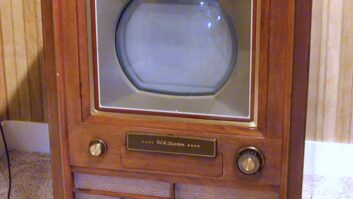Associated Volume Buyers has thrown down the gauntlet, as proto-buying group ASTAR prepares for its first organizational meeting next month.
While ASTAR — a working title that stands for Association of Selected Television and Appliance Retailers — is actively soliciting members with annual sales of $30 million to $40 million and higher, AVB announced plans of its own to lure large-volume dealers.
According to AVB director Bob Lawrence, the group intends to review the possibility of creating an additional division that would serve the needs of large dealers and regional chains. The new division would be designed to help larger independents combat the national big-box players by lending them “management service as well as industry expertise” that could make them more efficient and competitive, the group said.
The infrastructure and manpower already exists within the organization to support the effort, Lawrence said. Because they are competing in today’s environment against “existing mass merchants, as well as the emerging home-improvement channel, many large dealers have come to us. [They] asked if we could design special programs and packages that will help them compete in more of a broad area, where they must compete against multiple outlets in multiple areas,” he said.
The notion of creating a separate division to serve the needs of a specific member segment isn’t new to AVB, said Lawrence, who pointed to its Audio Video Independent Dealers (AVID) group, which provides special programs, education and services for high-end A/V dealers.
In a larger context, he is also concerned that the creation of a new buying group could negate some of the cost efficiencies gained by the recent consolidation of Key America into AVB and Nationwide TV & Appliances.
“The best way to get dealers the best acquisition price is to take cost out of the system,” Lawrence argued. “You accomplish that by consolidating, rather than by forming a new group, which will create new cost. We’re just getting to the point where we’ve had some consolidation. Now, [ASTAR] would undo that.”
The upstart organization, which is still in the discussion stage, was born out of NATM’s dismissal of four midsize members in January. The dealers — Handy TV & Appliance, Queen City, Vann’s and Video Only — say that mid-tier merchants have been disenfranchised by NATM, which is consolidating around fewer and larger members, and that the other major buying groups skew toward smaller stores. (See TWICE, January 24, p. 1.) Former NATM executive director Saul Gold has agreed to lead ASTAR once the group gets off the ground.
Not surprisingly, Video Only president Peter Edwards, who’s spearheading the ASTAR effort, disagrees with Lawrence’s assessment.
“The way the buying groups are structured, there’s a bias toward the smallest dealer,” Edwards said. “Those doing $30 million and up are not getting a fair shake. For them, buying groups are more like associations. They connect them to vendors, but then they have to go off and cut separate deals — and vendors don’t want to negotiate multiple deals.”
Nationwide, whose 25 largest dealers meet separately under the Brand Builders umbrella, said the group-within-a-group approach suits its dealers just fine.
“You need a separate division when you get 10, 15, 20 dealers that are of the same size and makeup,” said Nationwide’s director Ed Kelly. “The big boys have different needs. They talk about logistics and other issues that non-truckload dealers don’t have to face.” All told, he said, the formula must be working because Nationwide has doubled in size over the past two years.
By contrast, MARTA executive director Warren Mann agrees with Video Only’s Edwards that a multi-tiered group structure is inherently flawed. “I consider it to be an unmanageable approach to the buying group business, an untenable situation,” he said. “It’s hard to have a first among equals.”
“Volume alone isn’t the only reason to be in the group business,” Mann added. “You also need a strategy, a theme, some sort of uniformity and a spirit of cooperation.” He further suggested that ASTAR, and its ousted NATM founders, examine their motivations: “Nothing good comes out of building a business on negativity. A business should be formed for positive reasons. They might want to consider working within a current group.”
Edwards reports that contacts with venders and targeted dealers — both affiliated and unaffiliated with existing buying groups — have been encouraging. “No one’s said no. The concept is definitely gaining momentum,” he said, adding that an inaugural meeting is planned for sometime next month, most likely in Chicago, to “lay out the concept and structure of the group and to ask for input.”
Meanwhile, AVB’s Lawrence has identified between 20 and 40 dealers whose volume and multiple locations would make them prime candidates for his group’s new division, which would launch sometime over the next three months.













